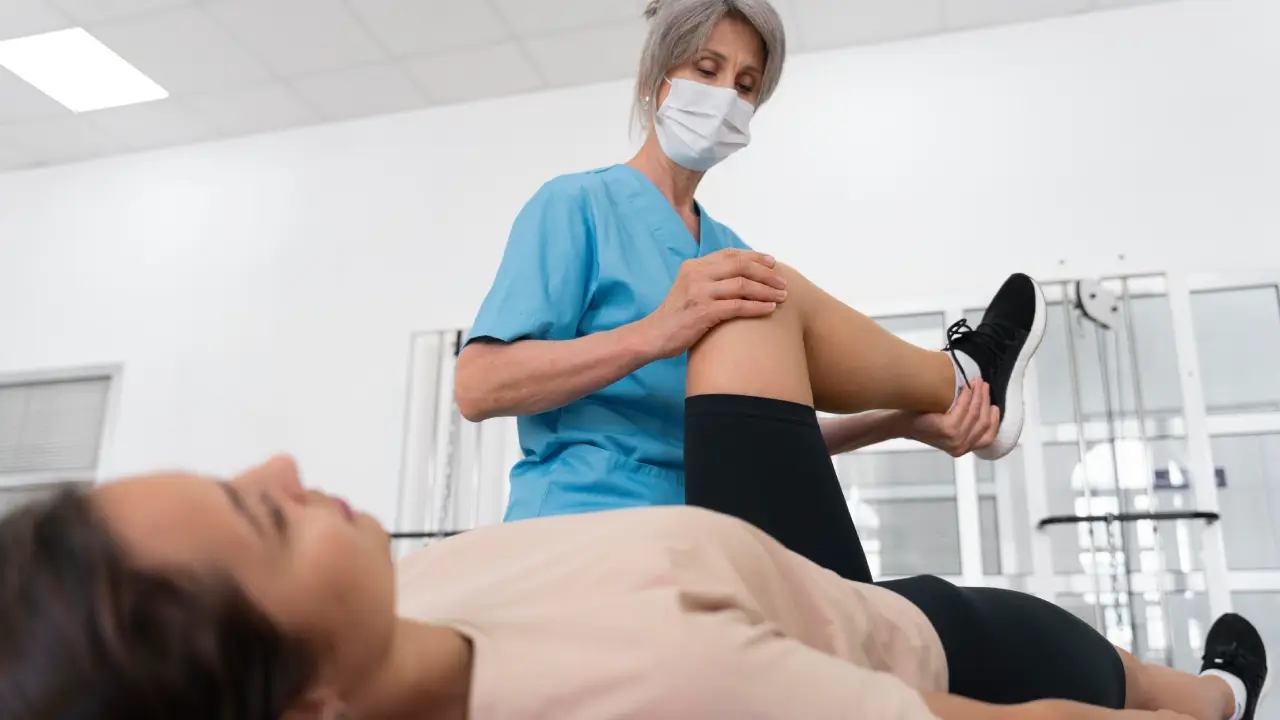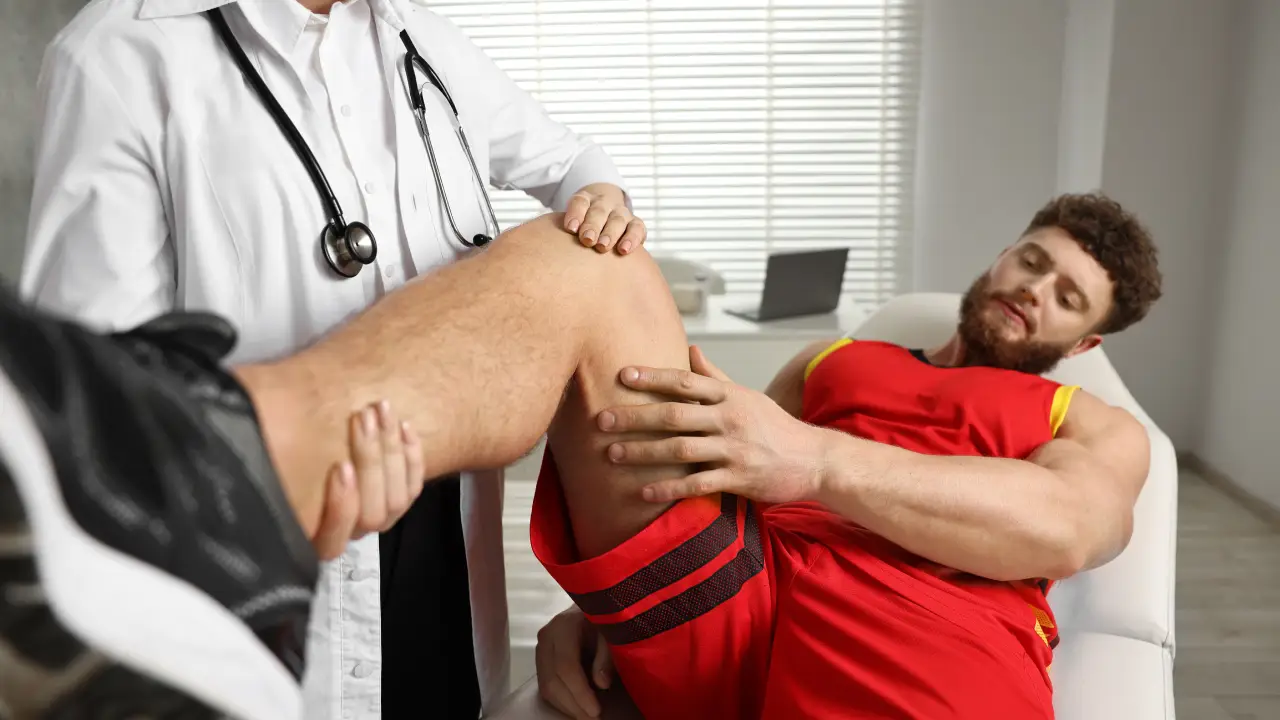What Happens When You Delay Care for a Knee Sprain
A sudden twist, a wrong landing, or an awkward step and suddenly your knee feels unstable. Most people assume a bit of rest and ice will take care of it. But delaying Knee Sprain Therapy can quietly turn a manageable injury into a lingering problem that affects everything from your balance to your Confidence when walking.
At our clinic in Brantford, we often meet people who waited “just a few weeks” before seeking help. By then, stiffness, weakness, and recurring pain have already taken hold. Acting early is what separates a smooth recovery from a drawn-out battle with discomfort.
Let’s explore what a sprain really does, why waiting makes it worse, and how timely Knee Sprain Therapy gets you back on your feet faster.
What a Knee Sprain Really Means for Your Body
A knee sprain occurs when one or more ligaments stretch or tear. These bands of tissue hold your joint together, providing stability and guiding movement. Even a mild sprain causes micro-tears that affect the joint’s natural alignment.
Without proper Knee Sprain Therapy, scar tissue can form unevenly, restricting motion and creating pressure on surrounding muscles. Over time, that imbalance spreads—hips, calves, and even your lower back start compensating. You might not realize it, but skipping early rehab changes how your entire lower body moves.
Physiotherapy interrupts that chain reaction. It retrains the muscles to work together again. It helps collagen fibres heal in the right direction, allowing you to move confidently without pain.
Why People Delay Knee Sprain Therapy
Many underestimate the injury because they can still walk or climb stairs. Others assume time alone will fix it. But here’s the truth: ligaments heal slowly, and without guided Mobility, they often heal poorly.
People delay Knee Sprain Therapy for three main reasons:
- They mistake reduced pain for recovery. Pain often fades before the knee regains full strength. That false sense of security leads to re-injury.
- They rely on online advice or home remedies. While rest and ice help in the short term, they don’t address weakened stabilizing muscles.
- They believe physiotherapy takes too much time. In reality, early sessions are shorter and easier — it’s delayed care that becomes complex.
Every week you wait adds layers of stiffness and muscle imbalance, making recovery longer and costlier down the line.
How Delay Leads to Lasting Damage
Think of your knee as a team of structures working in sync. When one ligament is injured, others step up to protect it. If you skip Knee Sprain Therapy, those compensations become permanent habits, throwing off your body’s natural rhythm.
Common long-term effects of delay include:
- Persistent swelling that flares with activity.
- Loss of Mobility when scar tissue thickens.
- Recurring instability, especially on uneven ground.
- Pain in other joints due to altered gait mechanics.
Early Knee Sprain Therapy prevents these patterns by addressing both the ligament injury and the muscle coordination surrounding it. Once compensation sets in, reversing it takes far more effort.
7 Painful Mistakes People Make by Delaying Knee Sprain Therapy
1. Ignoring Initial Discomfort
Those early signs — mild swelling, tenderness, or clicking — are your knee’s way of warning you. Ignoring them allows inflammation to harden into stiffness, making simple movements uncomfortable.
2. Relying Solely on Rest
Too much rest weakens the muscles that protect your joint. Guided Knee Sprain Therapy keeps the knee safely active, improving blood flow and ligament healing.
3. Using Braces as a Long-Term Fix
Braces help early on, but can lead to dependence. Therapy gradually rebuilds natural strength so you don’t rely on external support forever.
4. Skipping a Proper Assessment
Self-diagnosis misses subtle ligament strains. Professional assessment ensures you’re treating the right issue from day one.
5. Masking Pain with Medication
Painkillers hide symptoms, but the injury still exists. Knee Sprain Therapy treats the cause — restoring strength and balance rather than numbing the pain.
6. Returning to Sport Too Soon
Feeling better isn’t the same as being healed. Physiotherapists test strength, Mobility, and balance before you return to full activity.
7. Assuming Therapy Takes Too Long
Structured sessions actually shorten recovery time. Each appointment builds momentum, teaching the knee to move the way it should again.
What to Expect During Knee Sprain Therapy
Every recovery plan begins with a detailed evaluation. During your first visit, the physiotherapist assesses ligament integrity, swelling, strength, and range of motion. The therapist develops a progressive Knee Sprain Therapy plan that blends manual treatment, guided exercise, and functional retraining.
Early sessions often focus on gentle motion and on controlling swelling. As pain decreases, the program evolves to restore power, balance, and coordination. By the final phase, you’ll be performing stability drills that prepare your knee for daily demands—whether it’s walking, sports, or climbing stairs.
The process is collaborative. You’ll learn how to move safely at home, adjust Posture, and strengthen key muscles that prevent future injuries.
How Early Therapy Restores Confidence
Beyond physical healing, Knee Sprain Therapy restores trust in your movement. After an injury, many people unconsciously protect the knee, keeping it stiff out of fear. This hesitation limits recovery as much as the sprain itself.
Physiotherapists help you rebuild both strength and assurance through progressive movement patterns. Each stage proves your knee can handle more — from basic bends to controlled steps and full-range motions. That steady progress brings lasting stability.
When to Start (Hint: It’s Sooner Than You Think)
You don’t need to wait until swelling disappears or pain becomes unbearable. The best time to begin Knee Sprain Therapy is within days of the injury. Early movement under professional supervision prevents stiffness and speeds healing.
If it’s been weeks since your sprain and you’re still limping, struggling with stairs, or avoiding physical activity, don’t wait any longer. The longer the delay, the more work your body must undo later.
Where to Begin Your Recovery in Brantford
Our clinic in Brantford helps people move past knee pain through focused, one-on-one rehabilitation. Your physiotherapist tailors each Knee Sprain Therapy plan to match your specific ligament injury, pain level, and activity goals. Whether you’re dealing with a fresh sprain or lingering stiffness from months ago, our approach targets the cause, not just the symptoms.
A physiotherapist will guide you through a clear progression — from reducing swelling and improving motion to building lasting stability. You’ll leave each session with the knowledge and Confidence to move comfortably again.
If your knee has been holding you back, take the first step today. Book your assessment at Revive Physiotherapy and Wellness in Brantford and discover how early, guided Knee Sprain Therapy can help you return to everyday life faster and stronger.











